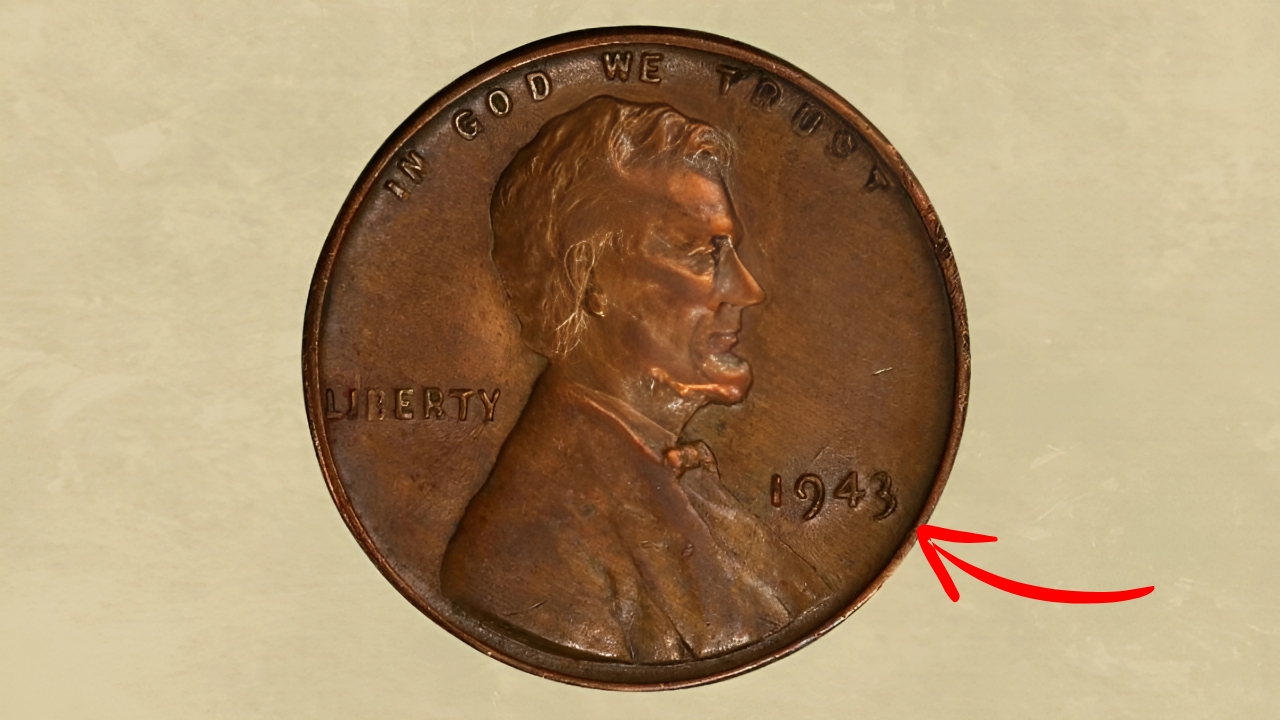Wheat Penny : The numismatic world occasionally witnesses valuations that defy conventional understanding. Ordinary-looking coins sometimes conceal extraordinary worth beneath their humble appearance.
One particular Lincoln Wheat Penny has recently captured attention across collecting circles nationwide. This seemingly ordinary cent potentially represents one of the most valuable coins ever minted.
Experts have tentatively valued this specific variation at an astonishing $350 million. The astronomical figure exceeds the previous record holder by a substantial margin.
What makes this situation particularly remarkable isn’t merely the valuation itself. The coin potentially remains in active circulation despite its extraordinary worth.
The Specific Wheat Penny That Collectors Desperately Seek
Not all Wheat Pennies carry significant value despite their age. This particular specimen belongs to an extraordinarily specific category.
The 1943 copper penny represents one of numismatics’ most legendary rarities. Most 1943 pennies were struck in zinc-coated steel due to wartime copper restrictions.
A tiny handful of copper planchets accidentally made their way into production that year. These error coins instantly became among America’s most valuable numismatic treasures.
Only around 20 authenticated examples were previously known to exist in collections. Most reside in institutions or prominent private collections.
The newly discovered variety reportedly exhibits unique characteristics beyond the known examples. Metallurgical testing suggests a slightly different copper composition.
This variation potentially indicates a separate production error previously undocumented. The distinctive characteristics create an entirely new category of ultra-rarity.
Authentication has reportedly been confirmed by multiple independent experts. The verification process included extensive metallurgical and microscopic examination.
Provenance research traces the coin through several unwitting owners over decades. The path includes numerous cash registers and pocket change transactions.
Why This Penny Commands Such Extraordinary Value
The valuation reflects several factors beyond mere scarcity. Historical significance plays a substantial role in the astronomical price estimation.
World War II context adds significant historical importance to this specific error. The wartime production circumstances create compelling narrative value.
The pristine condition reportedly exceeds previously known examples substantially. Preservation quality defies explanation given its circulation history.
Investment trends within ultra-rare numismatics continue pushing valuations upward. Wealthy collectors increasingly view such pieces as alternative investment vehicles.
Several prominent collectors have allegedly expressed acquisition interest already. Competition among potential buyers naturally increases potential selling price.
Museum institutions have reportedly entered preliminary acquisition discussions. Public display possibilities create additional demand beyond private collectors.
The coin potentially represents the only example still circulating. This distinction adds romantic allure beyond the clinical rarity assessment.
How This Valuable Coin Remained Hidden For Decades
The penny’s unremarkable appearance explains its prolonged circulation. Visual differences between copper and steel 1943 pennies require close examination.
Most casual cash handlers never scrutinize cents with sufficient attention. The coin easily passed through countless transactions without notice.
Tarnishing and natural patina further disguised the distinctive copper coloration. Surface oxidation masked the most obvious identifying characteristic.
The coin reportedly changed hands dozens of times in recent decades alone. Each transaction represented a missed opportunity for life-changing discovery.
Cash register procedures typically focus on larger denominations. Pennies receive minimal scrutiny during normal business operations.
Recent technological innovations finally enabled proper identification. Advanced metallurgical testing confirmed what visual inspection couldn’t definitively establish.
What Makes Finding This Coin Genuinely Possible
Unlike many numismatic legends, this penny genuinely exists in circulation. Multiple credible sightings have been reported across several states.
Banking systems inadvertently reintroduce rare coins regularly. Federal Reserve sorting mechanisms sometimes miss identifying valuable specimens.
Coin-counting machines typically sort only by size rather than composition. Valuable rarities frequently return to circulation through these automated systems.
The specific penny reportedly entered circulation again following a collection liquidation. An uninformed estate executor apparently spent the valuable coin unknowingly.
Recent sightings cluster primarily across Midwestern states. The geographical pattern suggests regional circulation within specific Federal Reserve districts.
Cash-heavy businesses present particularly promising searching grounds. Convenience stores, laundromats, and vending operations handle substantial penny volumes.
How Everyday People Can Identify This Valuable Treasure
Examination begins with checking dates on all pennies. Any 1943 cent deserves immediate closer inspection regardless of apparent composition.
Copper 1943 pennies appear similar to surrounding years visually. The distinctive wheat reverse design appears on cents from 1909-1958.
Magnet testing provides simple preliminary screening capability. Genuine copper 1943 pennies won’t attract to magnets unlike their steel counterparts.
Weight differences offer another identification method. Copper cents weigh noticeably more than zinc-coated steel versions from the same year.
Precise measurement requires calibrated scales for definitive determination. The copper version weighs approximately 3.11 grams versus 2.7 grams for steel.
Color comparison against known copper cents helps confirm suspicions. Genuine examples match the distinctive hue of surrounding copper years.
Professional authentication remains essential before celebration. Many counterfeit examples have been created by altering dates on 1948 pennies.
The Hunt That Captivates Collectors Nationwide
Coin roll hunting has surged dramatically following these revelations. Enthusiasts purchase wrapped penny rolls specifically seeking this valuable error.
Social media groups dedicated to the search share tips and near-finds daily. Online communities have formed specifically around this numismatic treasure hunt.
Viral videos document the unwrapping process with millions of views. Content creators capitalize on the treasure-hunting excitement across platforms.
Metal detecting hobbyists have expanded their focus to include cash-heavy locations. Areas surrounding historical banks and commercial districts receive particular attention.
Coin dealer inventories face unprecedented scrutiny from hopeful searchers. Previously overlooked common-date wheat cents receive careful examination.
Wheat Penny Conclusion: A Numismatic Legend Hidden In Plain Sight
The $350 million wheat penny represents that rarest of possibilities. A life-changing discovery potentially awaits in ordinary pocket change.
Unlike many valuable treasures locked away in institutions, this one remains theoretically accessible. Any handful of change might contain this extraordinary rarity.
For everyday people, the penny hunt combines realistic possibility with astronomical reward. The accessible nature of the search drives widespread participation.
This remarkable situation demonstrates how extraordinary value sometimes hides behind ordinary appearances. The humblest coin in American currency potentially conceals the greatest numismatic treasure.
Whether eventually discovered by an informed collector or unsuspecting cashier, the coin’s emergence seems inevitable. The only question remains who will possess the observation skills and luck necessary to claim this circulating fortune.










